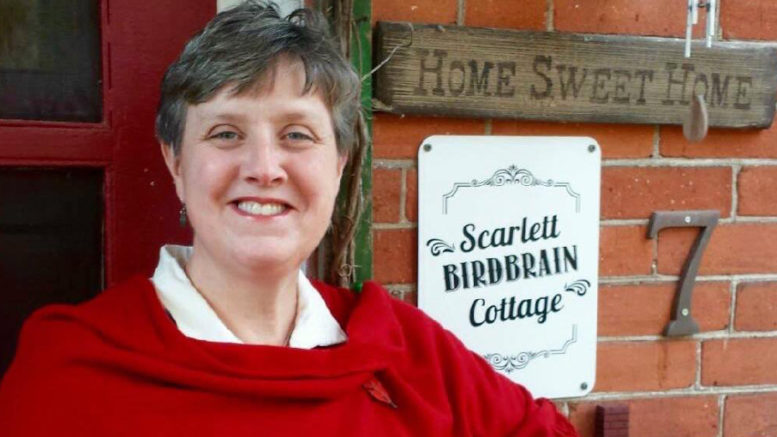Laurie Snider
Notes from the Nest
As I’m busily scribbling my latest dispatch from “The Nest,” we’re currently under the advisement of a special weather statement, for our region. Beginning later this evening and for most of tomorrow, it will be raining cats and dogs. This is thanks to the remnants of Tropical Depression Gordon, which will soon be lashing us with up to 40 mm of rain and possible wind gusts of 70 km per hour.
A little fancy fact for you. One of the possible origins of the expression raining cats and dogs, is Odin the Norse god of storms, who was frequently pictured with dogs, which were symbols of the wind. During the same period, it was noted that witches were whizzing around on their brooms, during storms, frequently accompanied by their trusty, black cats, a harbinger of heavy rain. So, when it was raining cats and dogs, it was thought to be a storm with strong winds and heavy rain.
Late August and early September is the official peak of the Atlantic hurricane season, which occurs each year from June 1 to Nov. 30. The word Hurricane, originated from the Taino Native American word, “hurucane” which meant evil spirit of the wind. In case you’re wondering the only difference between a hurricane, a typhoon, and a cyclone is the location on earth where they occur, the Atlantic, Pacific or Indian oceans.
Hurricanes begin their lives as tropical depressions, developing next into tropical storms and then onto hurricanes. They’re measured according to the Saffir-Simpson scale, according to wind speeds and given a Category from 1 to 5. Anything 3 or above is considered to be a major hurricane, that causes the most damage and destruction.
Damage is caused because of high winds or storm surge, which can push a wall of water up to 20 feet high onto shore and then inland flooding, due to those nasty witches on brooms and their feline friends, causing heavy rains. Amazingly, every second a large hurricane releases as much energy as 10 atomic bombs. They stir up millions of miles of air and can dump up to 9 trillion litres of rain, in a day. Their strong waves frequently toss tons of fish onto beaches, with their eyes popped out, due to sudden changes in pressure.
Beginning in 1953, the U.S. Weather Bureau named storms after women. Seems quite sexist to me. Apparently, many women complained because as of 1979, men’s names were added to the list too, as men are every bit as stormy as women. There’re six lists of names, used in rotation every six years. Names are retired from the list, if they’re responsible for many deaths and much damage, out of respect for those affected.
In 2005, there were 28 named storms. This necessitated using all of the names on the list and then naming the rest, after letters in the Greek alphabet. You’ll never see a Hurricane Quentin, Ursala, Xavier, Yolanda or Zack, as the first letters in those names aren’t included on the lists. The reason they’re given names in the first place, is because they’re easier to remember than latitudes and longitudes, especially if there’s more than one storm, occurring at the same time.
The largest hurricane on record was Typhoon Tip, in 1979. It occurred in the North Pacific and was 2,200 km in diameter, which is nearly half the size of the US. Luckily, it didn’t strike land. The deadliest hurricane occurred in 1970, the Bhola Cyclone, in Bangladesh, which killed between 150,000 and 300,000 people. Last year’s Hurricane Maria, devastated Puerto Rico and was responsible for almost 3000 deaths, the second deadliest in U.S. history. Canadians aren’t immune to the effects of hurricanes either. 1954’s Hurricane Hazel, which impacted parts of Ontario and flooded Toronto, was responsible for 81 deaths.
Perhaps you’re of the belief, that Earth is getting some kind of raw deal, when it comes to more than our share of these rainy, gusty storms, please allow me to correct you. There’s been a rather tremendous hurricane, raging on Jupiter now for over 300 years, and its bigger than our entire planet. Wow!
According to the weather prognosticators, the next major storm Florence, presently swirling and brewing in the Atlantic, is expected to swipe the eastern US, near the Carolinas later this week. It’s predicted to be a Category 4 or 5. Named storms Helene and Issacs, are following closely behind.
This can mean only one thing, Anderson Cooper and the gang, are presently checking their rain suits and galoshes for holes, so they can stand sideways, in the ensuing melee and record the events for us in real time, while its raining cats and dogs out. My hope is, that all in their paths will remain safe.

